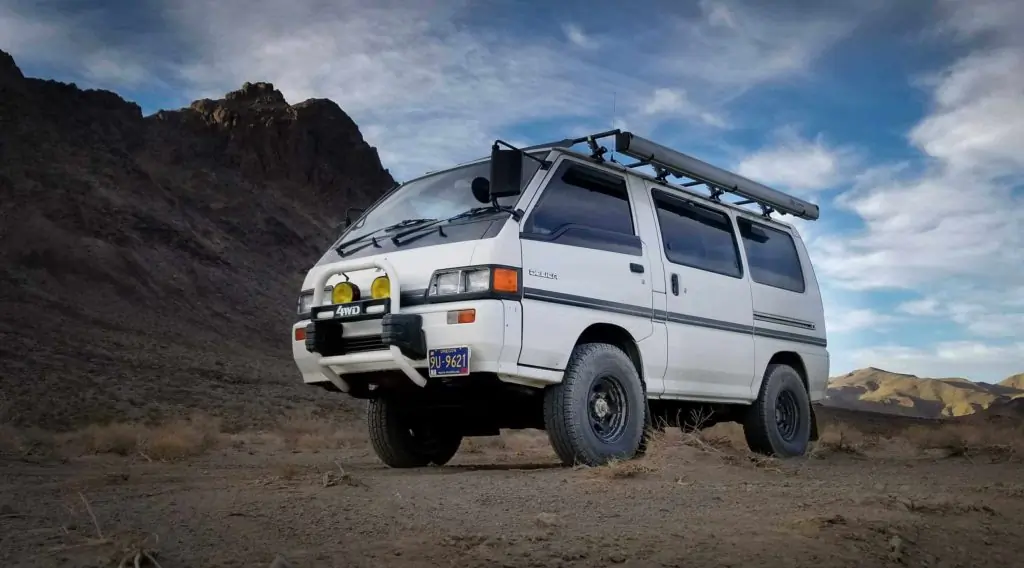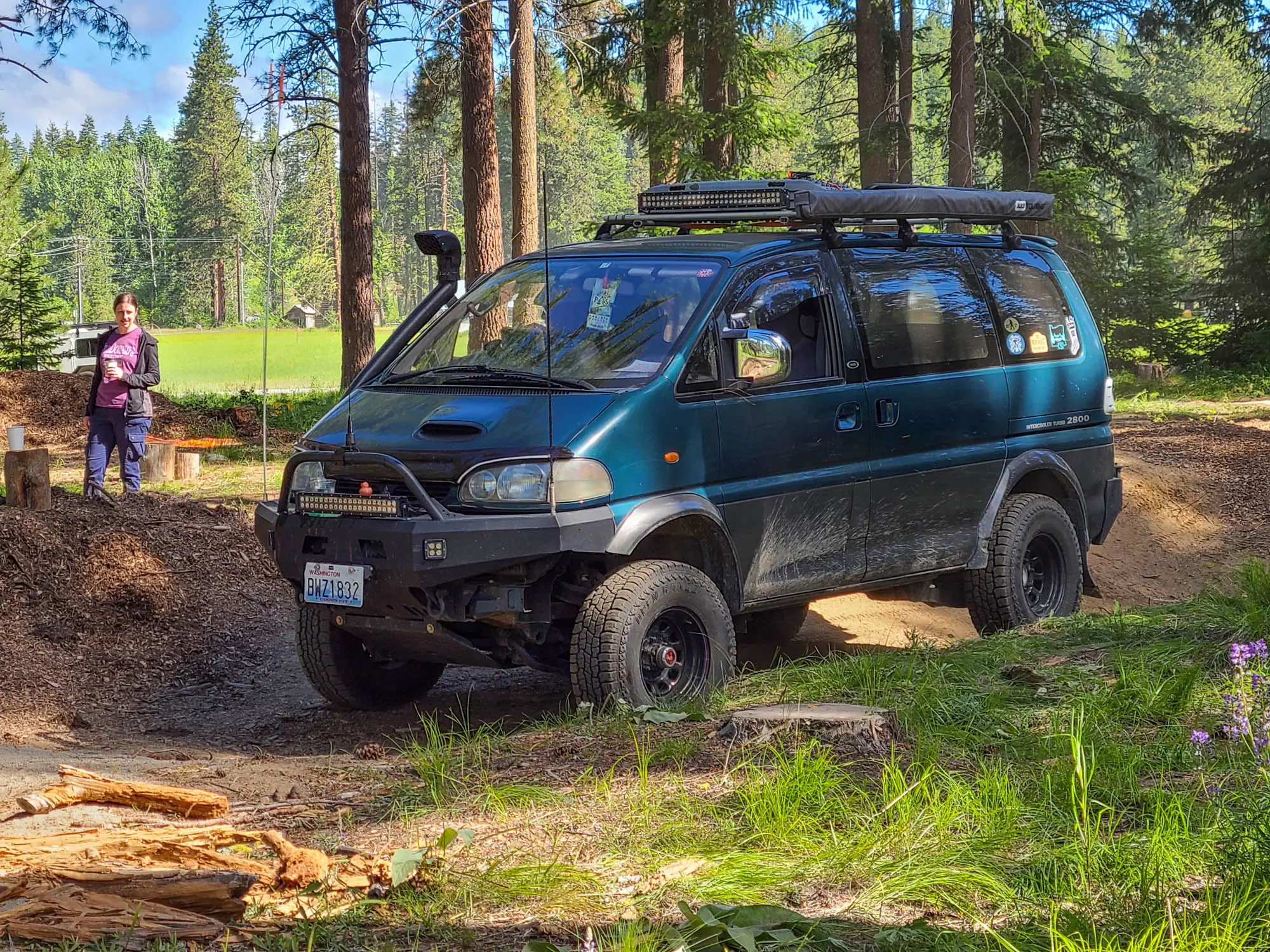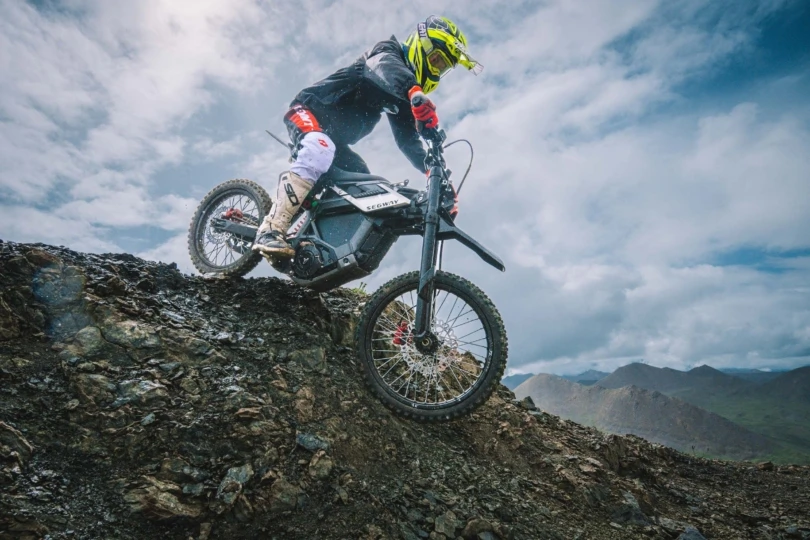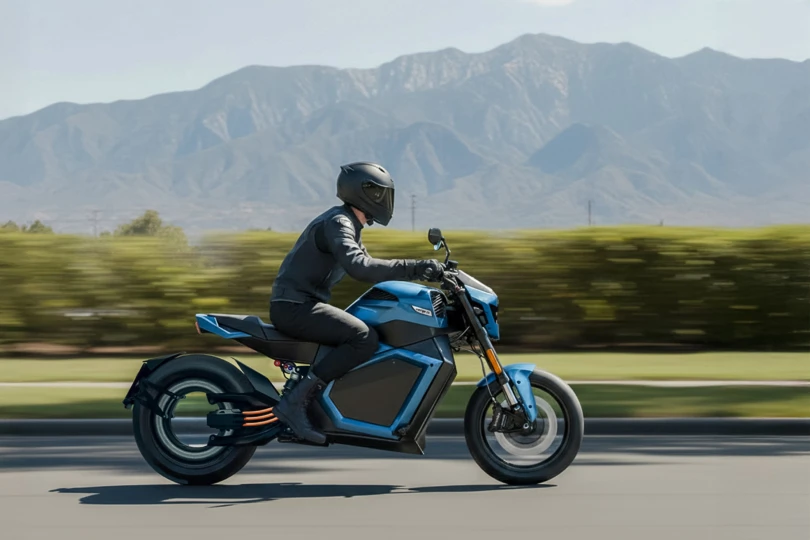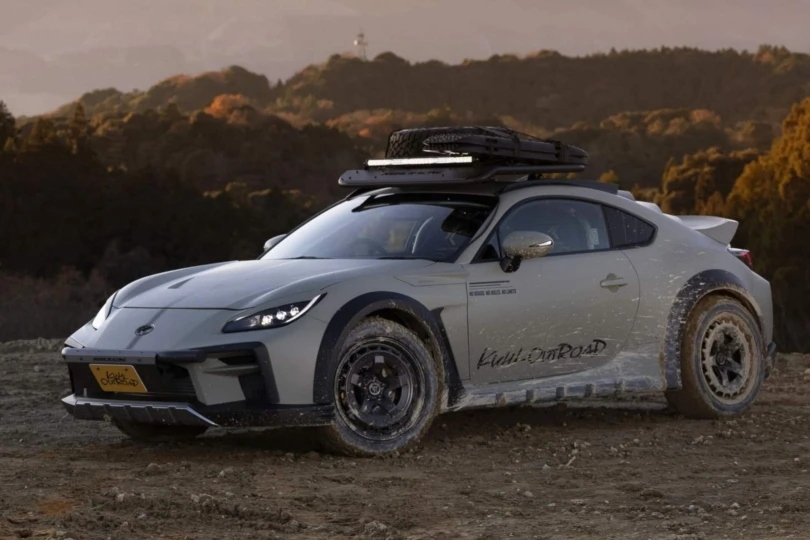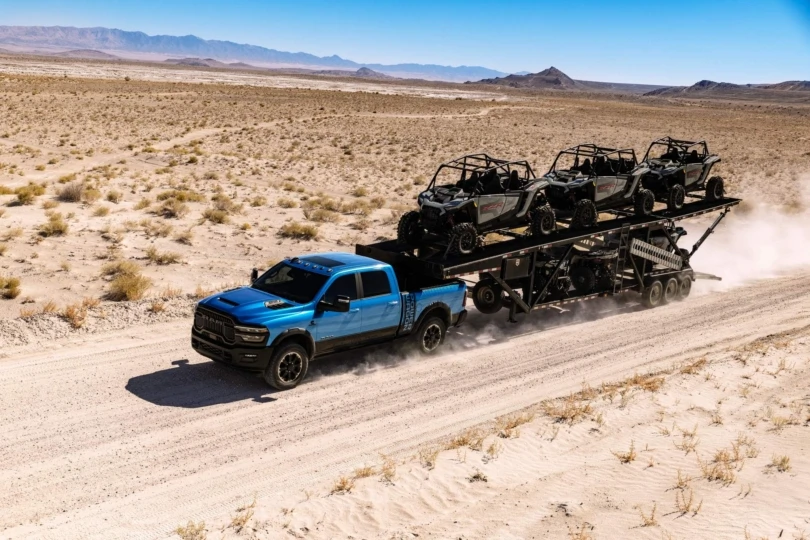If you’re looking for a cool camper, an adventure-ready van, or just a fun, quirky four-wheel-drive Japanese RV, the Mitsubishi Delica might be the ticket. If you’ve never heard of a Mitsubishi Delica van, we wouldn’t be surprised. They weren’t sold in the USA by Mitsubishi.
However, the Mitsubishi Delica Star Wagon and Delica Space Gear are becoming top choices for the adventure crowd, van lifers, and JDM (Japanese domestic market) vehicle enthusiasts alike. So, whether you’re simply curious about these Japanese vans or are looking to possibly buy one, we’ve put together the ultimate Mitsubishi Delica guide.
Here we’ll give a bit of history about these curious cruisers as well as some specs, and even some driving impressions. We’ll focus on the more popular Delica 4×4 models, although there were plenty of 2WD variants as well. And despite the fact all Delicas have a sliding side door, don’t dare call them minivans.
But first, how are these vans even getting here?
Importing a Van: The 25-Year Rule
Since Delica vans weren’t officially sold in the U.S., how are they coming to North America? There is the “25-year rule.” This is a regulation stating if a car was never officially sold in the U.S. (meaning it never was federalized to meet requirements for sale), it can be imported once it’s 25 years old.
Canada has the same rule, but it’s only 15 years. Because of this, over the last 10 years, a small, steady stream of Delicas have come to North America, and they have become popular adventure vehicles.
Note: Delicas had a staggering array of options, trim levels, variants, engine choices, wheelbases, roof configurations, and special editions. There seems to be an exception to every rule when trying to figure out how Delicas were originally equipped. This article is an overview highlighting the more commonly imported Mitsubishi Delica vans brought to North America.
Mitsubishi Delica Van Models
1968-1985: Early Mitsubishi Delicas
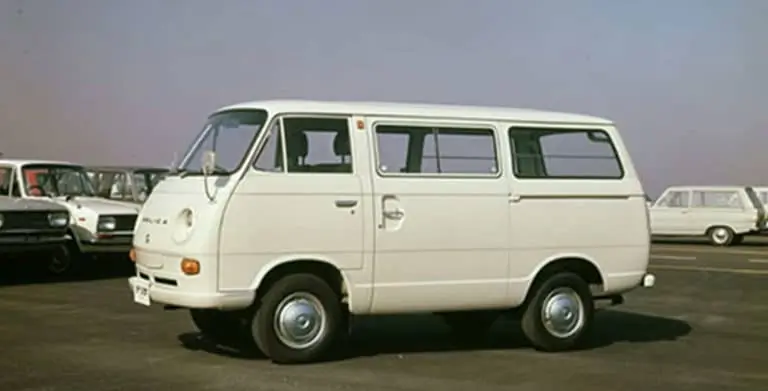
The word Delica is a combination of “delivery” and “car” in Japanese. The van first entered production in 1968. Early Delicas had tiny 1.1L or 1.4L engines making 58-86 horsepower. These small vans were popular in Japan and SE Asia and were sometimes known as the Colt. They were made in Japan and Indonesia.
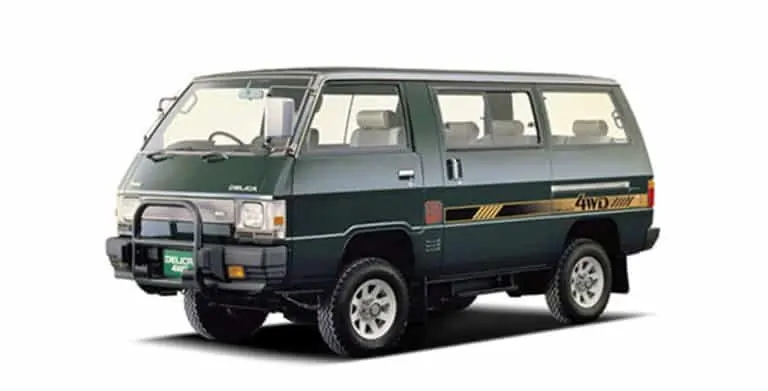
The redesigned second-generation model started production in 1979. Passenger versions were known as the Star Wagon. Four-wheel drive — a feature that would come to define the Delica’s go-anywhere character — became an option in 1982. These Delicas shared some components with the early Mitsubishi Pajero/Montero.
By the way, Delicas of this era were rebadged and sold under Chrysler, Ford, Hyundai, Isuzu, and Mahindra nameplates around the globe. A similar cab-over pickup model was also available and produced well into the 2000s in some markets.
In North America, few people import early Delicas. Occasionally, you’ll find a second-generation Delica truck with an RV body on the back. Instead, most people opt for the third-generation Delica. These vans ooze 1980s styling, which even now has a futuristic sci-fi look.
1986-1993: Mitsubishi Delica Star Wagon L300
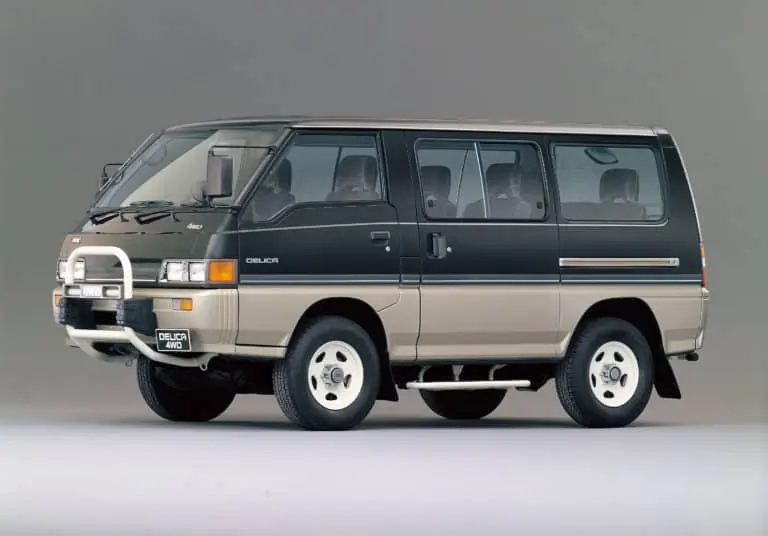



If you say “Mitsubishi Delica” in the U.S., most enthusiasts will picture the iconic third-generation model. Its futuristic ‘80s styling, forward control driving position (you sit atop the engine and wheels with no hood), and tall stance make it instantly recognizable.
The third-gen Delica Star Wagons ditched the body-on-frame construction for a more car-like unibody chassis. Despite this, they had a solid rear axle with leaf springs and a traditional 4WD system with a two-speed transfer case, with a low range, for off-road use.
The front suspension featured independent control arms with torsion bars for springs. The van helped serve the prospering RV/campervan market in the ‘80s and early ‘90s in Japan, too. To this day, the Mitsubishi Delica camper is a popular choice worldwide.
Fact: While the Delica Star Wagon wasn’t technically sold on the U.S. market, Mitsubishi Motors North America offered what it simply called the “van.” It was essentially a Delica with a gas engine and two-wheel drive.
Delica Star Wagon (L300) Basics
By far, the vast majority of Delica Star Wagons, also simply known as the L300, imported to North America come from Japan. This means they’re right-hand drive. A very small number come from left-hand-drive areas such as Europe or Taiwan, but don’t expect to find them regularly.
These vans have a seemingly endless variety of options, configurations, engine choices, and trim levels. In fact, according to Parts Souq, a seller of Japanese vehicle parts, there are literally 101 Delica Star Wagon variants. We’re just going to touch on some of the more common versions typically imported to North America.
Early vs. Late Model Star Wagons
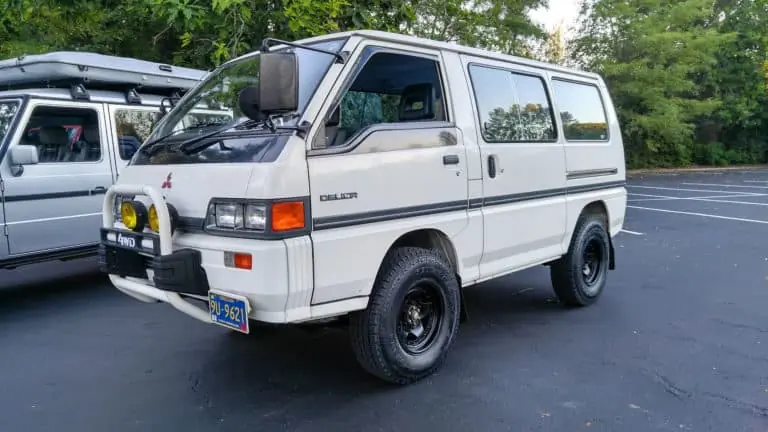



The L300 vans fall into early-model (1986-1990) or late-model (1991-1993) versions. Early models usually have four individual headlights; two low beams and two high beams. Also, early models’ rear windows slide open widely providing ample ventilation — great for camping in the van.
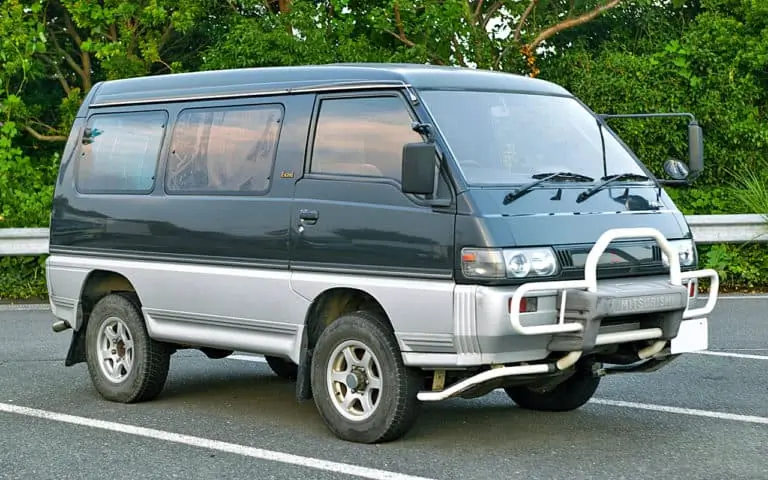



Comparatively, late-model versions showcase modern projection beam headlamps with high/low beams built in. Most late-model iterations have pop-out side windows instead of the sliders, which don’t provide as much air circulation.
Both models often showcase signature large yellow fog lamps on the bull bars — although not always. Those bull bars could also be had in a few configurations depending on the trim level.
Many have tubular side steps or running boards of some sort as well. Most vans are equipped with 15-inch wheels and tires from the factory.
Mitsubishi Delica Van Roof Variation
These Delica vans come with various roof heights and styles. For starters, there are low-roof and high-roof options. A high roof will net you a few more inches of headspace, mostly in the rear areas. Low-roof models can be had with a sunroof.
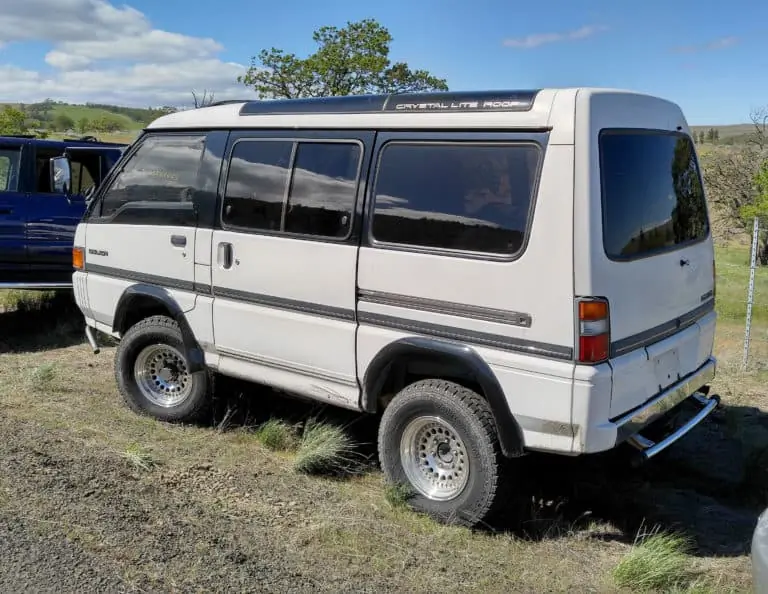



High-roof models may have a sunroof or the highly desired Crystal Lite roof (such as the van pictured above). This option features several panes providing abundant light and a more panoramic viewing experience from the rear passenger area. Crystal Lite roofs are accompanied by electric shades/curtains and fluorescent interior lights.
Take note: While the Crystal Light models are undoubtedly awesome, they can be more prone to leaking and rusting.
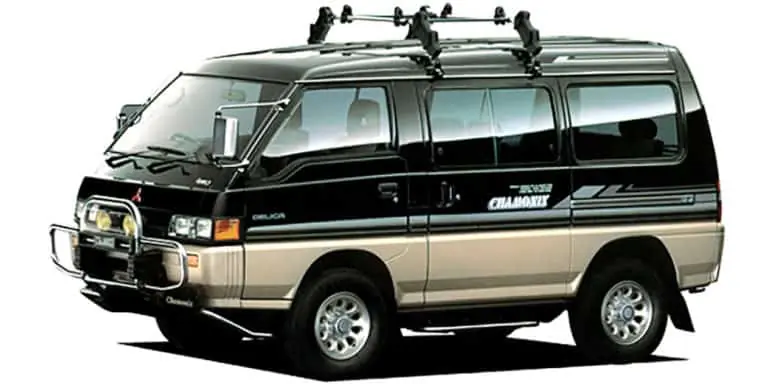



All Star Wagon models feature rain gutters, allowing owners to easily affix a roof rack system. But remember, high-roof models need different racks to account for the extra height so crossbars or platforms don’t touch the rooftop.
Tremendous Trim Levels
There are a multitude of trim levels. The most commonly imported are the basic GLX, the mid-grade Exceed (with velour upholstery), and the upper-end Super Exceed. The Super Exceed gets lots of bells and whistles, interior upgrades, and so on.
Then there are the ski-themed Chamonix and Jasper models. These come with waterproof carpets, dual batteries, a limited-slip rear differential, and more items aimed at winter sports enthusiasts. There are a host of other differences including power windows/locks, graphics, upholstery materials, wheel styles, and more.
In some markets, the Star Wagons could be had in a long-wheelbase model as well. These are extremely rare to find imported into North America.
Inventive Interiors
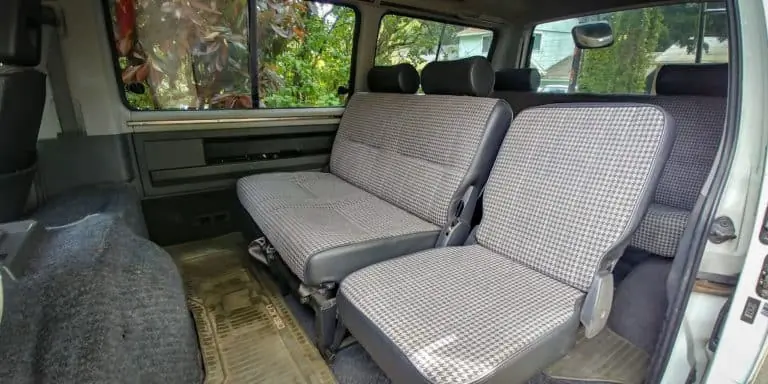



Star Wagon vans are versatile beasts. Up front, you’ll find two bucket seats. The middle row, depending on the trim level, will have either a bench seat or two captain chairs. Whether equipped with a bench or dual captain’s chairs, occupants can sit facing the vehicle’s front or rear thanks to a reversible bench or swiveling seats.
The third row has a bench seat. The seatback can be folded down. In fact, on many models, the middle and rear seats will fold down creating a platform to sleep atop.
Most L300s have a separate rear HVAC system allowing occupants to control their own climate. Seating capacity is generally seven people.
It should be noted that while the front seats have three-point shoulder belts, the rears are all two-point lap belts. These vans are not equipped with airbags.
Engines & Transmissions
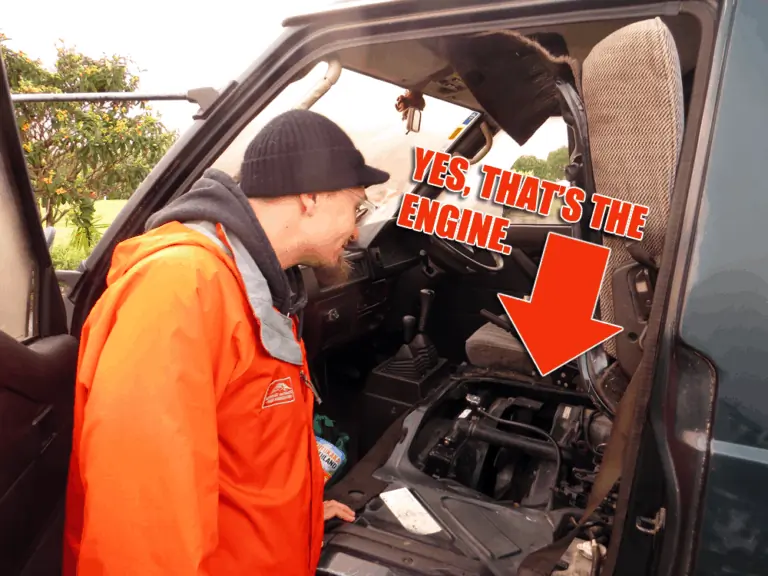



Most Delica Star Wagons imported to North America have one of two engines. The first is the 2.5L four-cylinder 4D56 non-intercooled turbo-diesel engine. The mill makes approximately 86 horsepower and 148 pound-feet of torque. The other option is the 2.4L 4G64 gasoline four-cylinder making 107 horsepower and 132 pound-feet of torque.
The L300 is a mid-engine configuration, and you sit atop the powertrain. To access the engine, you literally lift both front seats up. Either engine can be had with a four-speed automatic or five-speed manual gearbox. The part-time four-wheel-drive system has both high and low range. Automatic locking front hubs are the most common.
Unique Delica Options
Hey, the ’80s and early ’90s were unique times, especially in terms of Japanese cars. If having two ski-themed 4WD vans wasn’t enough, Mitsubishi had several rather interesting Delica options.
There was the Cool Box, for example. This was a small 12V fridge/freezer located on the floor between the driver and passenger. Next, there was the Audio Stage karaoke machine located in the back. Yes, you read that right.
How Do They Drive?
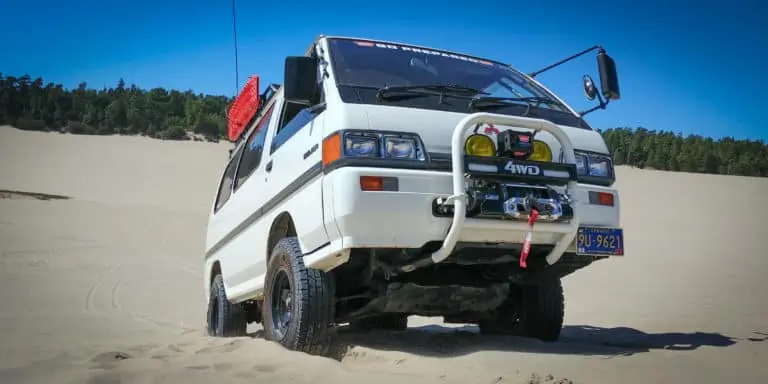



The first thing you should know about driving a Delica Star Wagon — especially the diesel-powered models — is they’re slow compared to modern vans. They have less than 90 horsepower and the aerodynamics of a shipping container. While the gas models are “less slow,” they’re not about to set any land-speed records.
Diesel models are happiest at and under 65 mph, especially those equipped with a manual transmission. They will go faster than 65; they’re just not happy doing so. The version I owned — a 1989 with the diesel — still had a speed warning chime that turned on, alerting me I was going fast. By fast, I mean 60 mph.
A Delica Star Wagon handles just like it looks: tall and top-heavy. You’ll want to slow down in the corners. The fact you sit directly atop the front wheels leads to an exaggerated sensation of elevation when traversing bumps. You feel like every obstacle is a major one. It definitely is a unique experience that takes getting used to and may not be for everyone.
These vans are surprisingly off-road capable. They feature plenty of ground clearance and decent approach and departure angles. Certain models came with a limited-slip rear differential for better traction. Add a set of good all-terrain tires, and these things will go places other vans could only dream of.
1994-2006: Mitsubishi Delica Space Gear L400
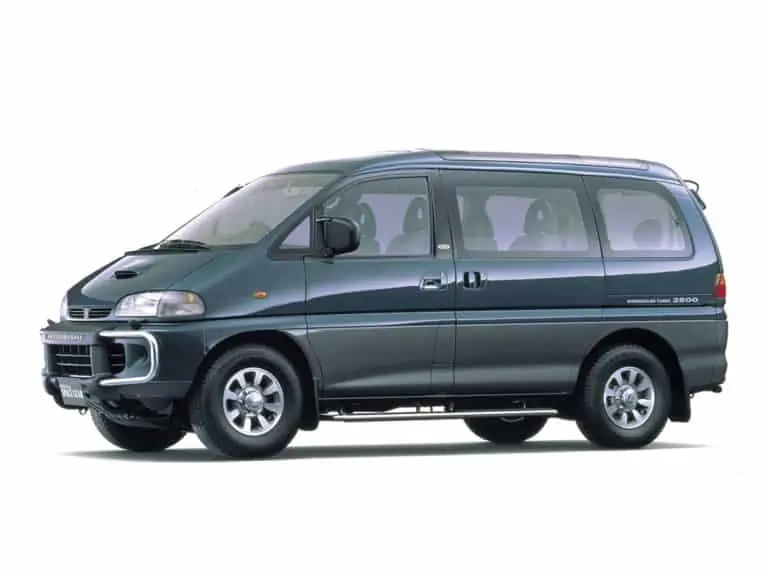



In 1994, the Delica was redesigned again. Gone was the mid-engine configuration. The powerplant was moved forward in front of the driver/passenger and placed under a traditional hood. The van got a much rounder look and a revised unibody chassis.
It maintained the solid rear axle but employed coil springs instead of leaf springs. The front suspension was still independent and continued to use torsion bars. Whereas the previous vans used drum brakes, the Space Gear models now had discs front and rear on many models.
The Space Gear represented a major step forward in terms of comfort, power, and drivability. While it didn’t have the quirky, angular ’80s shape, it was an improved product in many respects.
Since these vans only became recently available to import in the U.S. (remember that 25-year rule), they are just now starting to trickle into the U.S. market.




Delica Space Gear Basics
The Delica Space Gear, like the Star Wagon, was sold globally; most North American models are imported from Japan. Also, like the L300, the L400s had a megaton of versions; again, 101 engine/transmission/trim combos according to Parts Souq.
If you want to buy a Space Gear in the U.S. you can currently only buy an early first iteration. This model was made all the way until 2006, with a midcycle refresh in the late 1990s.
The L400s have the same roof options as L300s, despite the change in shape. This includes low-roof, high-roof, sunroof, and Crystal Lite versions.
Delica Space Gear Trim Levels
Delica Space Gear vans had similar trim nomenclature to L300s and just as many trim level variants if not more, including Chamonix and Jasper. The L400s are also available in short- and long-wheelbase versions. Unlike the L300, however, it’s much more common to find the long-wheelbase models imported to the U.S. and Canada.
Very Versatile Delica Vans
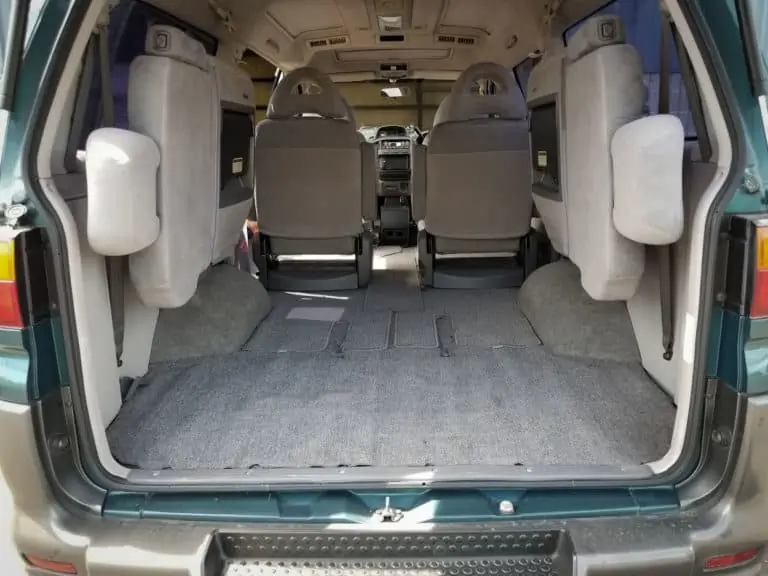



The L400’s insides are pretty amazing. Up front, you’ll have two captain’s chairs. The middle row most commonly has two captain’s chairs on tracks, and they can move forward and backward. With the pull of a lever, the seat bottoms will retract upward, allowing the seats to be stowed tightly against the front seats. Additionally, those middle seats can swivel 180 degrees.
But the real show is the rearmost two-piece bench. The seatbacks recline, and then the entire seat can fold up and stow against the vehicle’s sides, opening the floor for cargo.
Conversely, all of the seats — even the fronts — will recline flat and create a platform to sleep atop. It’s the Japanese-made Swiss Army knife of interiors.
The L400’s rear windows pop open sideways like late-model L300s. Some versions have motorized curtains that can open and close with the push of a button — great for camping.
Delica L400 Engines & Transmissions
One of the biggest improvements the L400 has over the L300 is engine and transmission choices. Globally, there are nine choices; the most common are a 2.8L turbo diesel and a 3.0L gasoline V6.
The 2.8L 4M40 turbocharged and intercooled diesel makes 140 horsepower and 232 pound-feet of torque. That’s a big jump compared to the L300’s 2.5L 4D56 (the 4D56 was also still available in the L400 in some places).
The popular gas version implements a 3.0L 6G72 V6 engine making 185 horsepower and 195 pound-feet of torque. The diesel can be had with a four-speed automatic or five-speed manual transmission. The V6 comes with the automatic only.
Whereas the L300 has a basic two-speed transfer case for its 4WD system, many L400s get the more advanced Super Select t-case. This incorporates a center differential giving drivers four drive modes: 2WD, 4WD high-range with an open center differential, 4WD high-range with a locked center differential, and 4WD low with a locked center differential. That open differential allows the vehicle to operate more like an AWD vehicle than a 4WD unit. This makes it very good in snow, rain, and other low-traction environments. It can also be used on dry pavement without damaging the system.
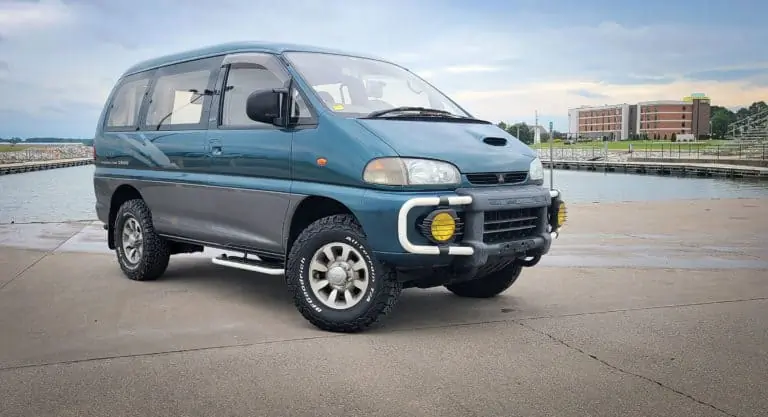



How Does the Delica Space Gear Drive?
The Delica Space Gear vans drive much more like a modern van or car. With the engine in front of the driver and passenger, the seating position is much more mainstream, dare I say normal? It feels much more like a van, though the driving position is very reclined.
The increased power and chassis tuning let the L400 keep up with North American traffic much easier than the Star Wagon. One could argue some of the L300’s pokey nature adds character. But if you’re looking to make miles and keep up with traffic, the L400 is certainly a better option on road.
Off road, it’s very similar to an L300. However, some will argue the L300 is more capable. But with the Super Select transfer case, you have more 4WD options.
2007-2020 Mitsubishi Delica D:5
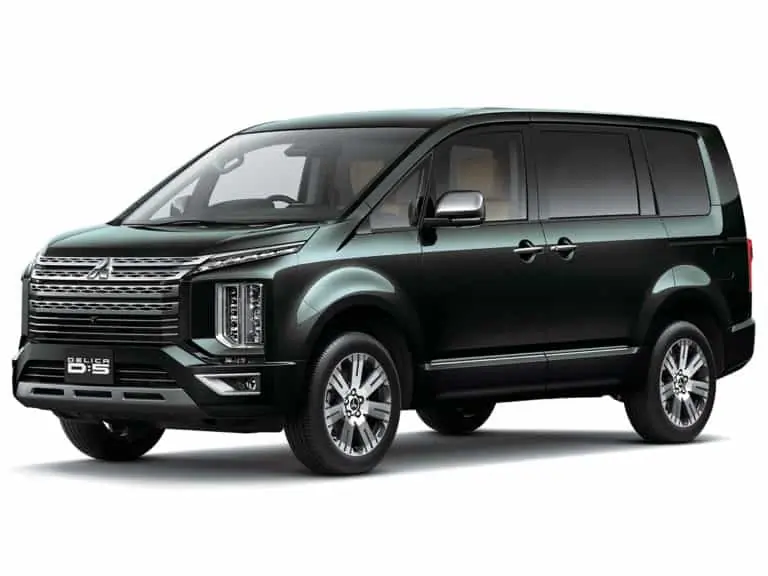



In 2007, an all-new Delica was released. It’s certainly not something we’ll be seeing anytime soon, well at least not until 2032 in the U.S.
The D:5 maintains the same spirit as the previous Delica vans, but is arguably more like a crossover or car-based van. It’s no longer available with a selectable transfer case, either — so, no low range on offer. Rather, it’s equipped with an all-wheel-drive system.
Power comes from either a 2.0L or 2.4L gasoline engine, or a 2.2L clean-diesel mill. All engines are mated to a CVT.
So, Where Do You Get a Mitsubishi Delica Van?
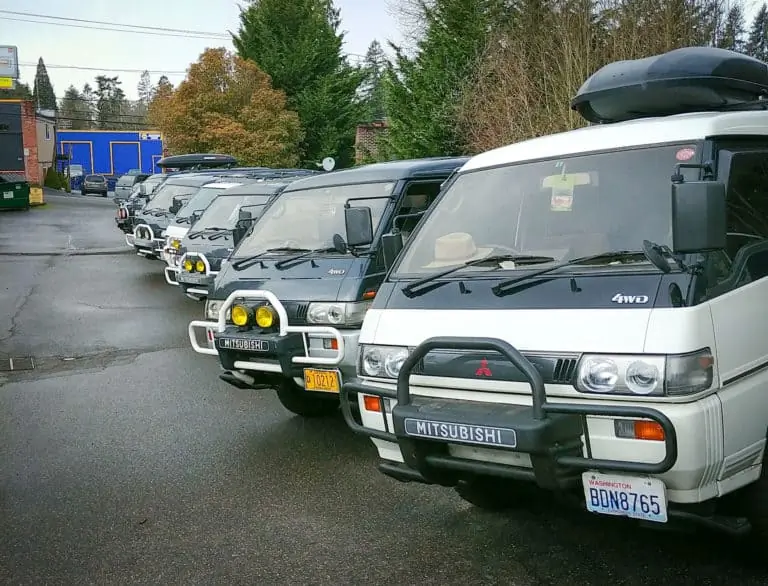



Now that you’ve read all about these uniquely different Japanese vans, how do you go about getting one? There are multiple ways.
Delica Importers
There are many importers across North America and Canada with lots full of Japanese-market vans including the Mitsubishi Delica. Most of them make the buying experience no different than purchasing any other used vehicle.
Most will have already done the import paperwork, often obtained U.S. titles, and some will have done a host of preventive maintenance. This would include services like replacing the timing belt, water pump, battery, hoses, accessory belts, glow plugs, and fluids. It’s always a good idea to ask the importer what’s been done in terms of maintenance before buying.
Importing a Van Yourself
You don’t need to be a licensed dealer or importer to bring your own Delica into the USA. However, it can be a daunting task if you’ve never done it.
First, you’ll need to find the van overseas and work with someone there to have it shipped. You’ll need to be sure the van has a host of compliance paperwork, the title from the previous owner professionally translated into English, and the ability to go to the port to receive the vehicle.
You can hire a broker to help with the process if you determine you’d like to import the van yourself. We strongly suggest doing your homework before buying via a Japanese auto auction site, however.
Regardless of which way you go, buying a unique JDM van isn’t for everyone. We always recommend potential buyers know how to do basic repairs and can “turn a wrench” from time to time. Otherwise, little repairs can turn into costly trips to a mechanic.
Plus, getting parts can be tricky if you don’t know where to look. Thankfully, there are some great communities out there including DelicaForum.com and Facebook groups such as MDOC: Mitsubishi Delica Owners Club USA. There you will find plenty of other Delica owners who share info about their vans and help with info. You can also follow Delica owners such as myself. You can find me at Crankshaft Culture. I discuss the ins and outs of Delica ownership regularly.
